
At 16:30 on Monday 19 August, elite mountain runner and celebrated event organiser Shane Ohly arrived at Cardiff Castle in South Wales. He'd left Conwy Castle at the country's northern end at 10:00 the previous Thursday. In those four-and-a-half days, he'd travelled 380km, ascended 16,400m, crossed all of the major Welsh mountain ranges and many of the country's tallest peaks, and become the first person to complete the course of the Dragon's Back Race in one continuous journey.

Held every year in the first week of September, the six-stage event is widely regarded as one of the toughest mountain ultras in the world. So, what inspired Shane to dial an already gruelling experience up to 11? And more importantly: why did Instagram block photos of him resting? How did he end up with a mouthful of Canesten cream? And was he truly held together by tape by the journey's end?
If it wasn't painful then you wouldn't get that sense of satisfaction. But you have to distinguish good pain from bad pain
We spoke to Shane on a Thursday afternoon midway through this year's Dragon's Back Race (2-7 September), whilst he was taking a short break from his role as Event Director. Over those 30 minutes, plugged into a phone-based video call in the passenger seat of one of the site vans, this is what he had to say…

Question number one: how is the recovery going?
I actually feel fine. I ended up going much slower than expected, and because of that I have essentially got away with it, seemingly unscathed. I didn't even have DOMS [delayed onset muscle soreness] for the days afterwards, which is fascinating in itself, but I think the proof will only really be there when I get back running. I haven't run since, other than a little sprint across the field as I chase somebody on this event site. So the recovery has been very good on the surface, but when I look at the underlying health data that I track, like my HRV or Garmin "body battery", all of those metrics are still very poor. My resting heart rate is significantly elevated, around 20% more than normal at the moment. It's a good question because I often see participants at our events getting back to it too quickly after these big expedition-length races. And we've had some very notable people over the years who have done themselves some long-term damage by rushing back to training and racing. So I'm taking it easy. I'm not expecting to do anything for September. And then we'll get going again, hopefully on a new training block.
I've read interviews with elite-level marathon runners who say they take about a month off after a significant race, in which they cross-train or do other such things. Your event lasted 102 hours and 33 minutes, which is stunning, even within the field of ultra running. Yet you say you went slower than expected. What kind of time were you hoping to get?
I was planning to go just under three days, or around 72 hours. So, I massively underperformed in that sense. I also massively underfueled. I came back with three-quarters of all the food I had planned to eat uneaten. I can get into the details of why I think that happened (see below), but the fuelling was not there to support the performance, and inevitably the performance didn't happen. So there's a lot of learning for me in that respect. And whilst I feel very comfortable in that 24-30 hour effort zone, and I've done stuff in that area a lot over the years… (on this race) I did my first 100-mile, my first 200-mile, my first "second night", my first "third night" and my first "fourth night" all in one go. So there was an enormous amount of learning. I think I just didn't have enough experience to execute a performance the first time around.
How did you feel about that "underperformance"?
If you want to go for speed on a Dragon's Back with non-stop effort, do it in June when you've got the long days
When you take on these big challenges there's uncertainty. The most notable challenges I had to overcome included: a period with a very sore left knee that I thought was going to be game over; taking double the time over the Cadair Idris leg than I'd expected; the first 12 hours bringing very poor weather that made life challenging; the first night bringing appalling visibility and thick clag with 10 metres of visibility which makes progress slow… add it all together and you become one, two, three, four, five hours behind your schedule as it keeps building.
I got to a point at about 36 hours in where I thought: "Am I going to chase this really hard? Or am I just going to go with the flow?" I decided it wasn't really a decision. I was always going to go with the flow. My priorities had always been: firstly do it in good style, second completion, third time. And good style for me was to have a great time with my friends. As for any very small disappointment with the performance element, that was completely outweighed by the quality of the experience. I actually lost my voice because I laughed and talked so much on a few occasions. It was absolutely brilliant, and I feel a sense of privilege on lots of levels.
I had some amazing support from a real spectrum of friends, from old, old climbing friends going back decades, to very new but very close friends, to members of the event team, and even including Dragon's Back winners and participants who I didn't actually know well but were keen to be involved. So it was this wonderful combination of people with a shared passion for the Dragon's Back Race. I felt very, very lucky to be the centre of all that attention for four and a bit days. It was absolutely amazing.
People always say that whenever you first take on a particular race or distance, just do it to finish. If you want to really perform, you need to gain familiarity. Is this the kind of thing you could ever repeat?
The funny thing is on many occasions during the run people were saying: "Oh you're going to do the Spine Race next", or "You're going to run Cape Wrath Ultra" and I replied: "Definitely not. Never again. This is horrendous." But within a few days of finishing, I was thinking that if I did it differently I could do better. Two weeks later and I'm dreaming about having another go.
You've mentioned lots of joy and losing your voice from laughing so much with all these wonderful people around you. The other side to that - the pain - is almost self-evident… what was that relationship like between the two?
As part of my preparation, I actually did some sessions with a sports psychologist through a company called Fit Think which offers their service to our Dragons Back Race participants. It was absolutely brilliant. I always knew that such a long endurance effort would have a significant psychological aspect to it, and we spent some time thinking about and preparing pain management strategies and understanding the difference between "good pain" and "bad pain".
Bad pain is acute injury that may cause long-term damage and may stop you in your tracks. I had some short-ish episodes of that. But the interesting bit is the good pain: general fatigue and tiredness and achiness that isn't causing long-term damage. You get an enormous sense of satisfaction and accomplishment when you overcome good pain. And if it wasn't painful… you wouldn't get that sense of satisfaction. If you breezed through Wales and got to the end thinking: "That was easy, I'm fine", then you wouldn't experience the same level of positivity afterwards. When you're looking for a sense of achievement at the end of a challenge, you need to accept some level of discomfort. Seeing that discomfort as a positive thing was how we reframed it in my mind. It was really, really helpful to do that.
You've mentioned that you didn't eat most of the food that you took, and your sleep seems to have been very minimal. How did you cope with that?
I've actually gone through all my data and worked out all my splits and average times for each leg and each section and moving time, rest time, et cetera. So, headlines: 102 hours in total, 91 hours moving time, 11 hours rest or sleep. It's not easy to determine the difference between sleep and rest, but it looks like about four hours sleep.
In hindsight, what I needed was more sleep and that would have allowed me to go quicker. I went straight through the first night, that was fine. But by the end of the second night, I was an absolute mess. I was learning on the job and lots of my ultra-running friends who have finished the non-stop Wainwrights or the Tor des Géants or won the Spine Race, told me that what generally worked for them is a 20-minute snooze, which leaves you feeling refreshed. The first time I tried to sleep, I did sleep for 20 minutes… and I was an absolute zombie when I woke up. It took me a long time to get going. Fortunately, I was with Hannah Rickman, a super experienced ultra-runner. She told me I probably needed to sleep less. We reduced the intervals and reduced the intervals, and eventually by night three we found that five minutes was the trick. If I just lay down for five minutes and shut my eyes, we found that I hadn't cooled off, I didn't have any stiffness, and was still good to go. I could just get on and start marching again for 45 minutes or an hour before that tiredness caught me again. At one point I was lying down on my face (there are reasons why it was the best position for me to be in) and Hannah took a photo of me lying there and put it on Instagram… and Instagram blocked the content because they thought I was a corpse.
Brilliant. Did it make it through in the end? Is that picture available?
I can certainly share that one with you. But there are a few fairly funny pictures of me. I was so tired towards the end that if I lay down on my back I fell asleep almost instantly. Then, within seconds, I would wake up choking because the saliva in my mouth was running down my throat. It seemed there was some kind of reflex that kicks in when I sleep normally, but that I was falling asleep so fast that the automatic process wasn't happening. Hence why I was lying face down. You quickly learn to dislike waking up choking.
This might be a good time to ask what's possibly a silly question: was this your limit?
No. No, it wasn't. There's no doubt about that. If I'm brutally honest, now that I've had time to reflect, the execution has been poor despite my planning. There were just too many unknowns for a distance that long. There's a lot that can be improved in the execution. And even as we jogged through the last couple of kilometres through Bute Park (in Cardiff), there was a little banter with my group of running friends about who would cross the line first and how fast we could go. We ended up racing each other. And we actually sprinted for around 300-400 metres… but at more like one-kilometre pace. I thought to myself: "This is not good. If I can still do this at this point, that means I have a lot in the tank". So there was an enormous amount of learning. It's clear to me I could go faster over that distance and time.
In hindsight, more sleep would have allowed me to go quicker. By the end of the second night I was an absolute mess
Is the big challenge finding what you want to do next?
I've got a strong suspicion that I will have another go at this Dragon's Back route. As we said, "completion then competition". I'm not saying it's guaranteed because it's a bit too early, but it's sitting at the forefront of my mind at the moment. I'll give it a few months' reflection and see what winter training brings.
Is there a reason why the event is generally held at the beginning of September?
It's just historic. The simple answer is the original event was held in 1992, in the first week in September. So when I resurrected the event in 2012 on its 20th anniversary, we went in the same week. We thought May was the right time for Scotland's Cape Wrath Ultra (also organised by Ourea Events) so September is now tradition for the Dragon's Back race. It's a good week.
It was perfect timing to do it just in advance of the event this year's race, but you could do it at any point in the non-winter months, I guess?
Yeah, absolutely. One of the big learning points was that I'm a confident navigator when I am running just for myself in the mountains in the dark. I don't slow down that much when I'm relatively fresh. But I massively underestimated how much it would affect my running buddies, all of whom are great ultra runners… but not orienteering navigators. During this attempt, it was up to them, as I wasn't in a state to contribute and was too tired to give any navigational input. So there's a real learning there. If you want to go for speed on a Dragon's Back with non-stop effort you need to do it in June when you've got the long days.
So June 2025 then?
I've actually already put a line in the diary.
Does looking at the experiences of other ultra runners actually help you? Or does it always come down to the specifics of how your body reacts?
It always helps. There's no doubt about it. The broader set of opinions and experiences you can pull into a decision, the more data you have, the better decision you can make, generally speaking. However, I think some things are incredibly personal and the right level of restorative sleep for me will be different to another person. I've already proved that going into a Dragon's Back attempt with a plan based on my friends' experience just didn't work for me. Everybody's so personal with their nutrition in particular that you can't just base your plan on what somebody else does. You have to go out and learn it for yourself. I certainly made some big nutritional mistakes as I moved out of my comfort zone, beyond 24 hours.
Two specific kit observations: from the pictures it looks like you had Rocktape on your knees and the shoes you were wearing were Scarpa Spin Ultras. Is that right?
That's right. So Scarpa Spin Ultras first of all: Scarpa is one of our sponsors at the Dragon's Back Race. Obviously, my first choice would be to use one of our event sponsor's shoes, so I spent many months trying almost every shoe in the Scarpa range. There is no one shoe that's perfect for Dragon's Back because the terrain is too varied. You've got fell running-esque grassy sections, you've got all that incredibly rocky terrain early on and you've got roads and loads of trails… so whatever shoe you have is a compromise. To cut a long story short, I felt that the Spin Ultras were the right compromise in terms of grip, comfort and support. And the critical thing for me was being fortunate to have a size 43, a 44, and a 45 available. So as my feet swelled, I just went up in shoe size. From about maybe 200 kilometres in, I was in the size 45s. I think when you're doing the run by six stages the rest you have overnight allows the swelling to reduce. I obviously didn't have that opportunity - or very limited opportunities for that - so my feet just swelled and I absolutely needed those extra big shoes.
Is that sort of thing recognised? You obviously identified that was going to happen.
Yeah, it is a recognised thing. I think it is more common in the very, very long races. I had the shoes from Scarpa still fresh in their boxes, and I said to the brand: "Look, I probably won't need them, and if I don't use them, I'll just send them back to you." But they all got used. So I've now got this ridiculous collection of identical shoes drying in the garage at home.
At least you've got a reason for it… (looks guiltily at own shoe collection). And the Rocktape, was it supporting the knees on all of the ascent and descent?
Yeah, so the first big, unexpected problem was a kind of left knee soreness, and it wasn't the kind of niggle that I'd experienced before in training. It was out of the blue and it was very painful very quickly. For many hours I thought that was going to end my attempt. But I pushed and hobbled through to get to Abergynolwyn where our support point was. Nat, my friend and one of our event doctors, was supporting me throughout. She examined my knee and we then got Morag, one of our regular event physios, on video conference to us. We had an online assessment between Morag on the video and Nat there on the ground. They identified that the problem was just a tendon taking a bit too much load, and offloaded it with that taping. It fixed the problem. I gingerly left the support point and walked for about 45 minutes just to get myself going and build some confidence, and soon realised that the knee had stopped hurting.
It's just amazing what a very experienced medical team can do, and they've been doing that all of this week at the Dragon's Back Race. You see runners come in with MSK problems or blisters thinking their race is over, and a lot of the time we can patch people back together and reassure them that they're in that good pain, not bad pain, area and it's safe to carry on. The other knee that I ended up taping is a known problem I have. Sometimes my right kneecap doesn't quite track properly which then starts to create a bit of pain. That's very simply fixed with superficial taping. The other bits of tape were for some tendonitis on my right Achilles, the tape just helped lift that… and then there was some tibialis anterior pain - which is the tendon on the front of your shin that lifts your toes, which is a classic injury and very common indeed on our long events. So yeah, lots of tape. It was quite funny pulling it all off at the end.
Was it satisfying to overcome these various problems?
One of the big satisfactions to take away was solving problems as a team. I was surrounded by some super-experienced runners and great medical support. Actually, I haven't yet mentioned the biggest problem I had: it was the mouth ulcers that developed from way too much sugar and caffeine over that first 30-hour period. It's fine when you're doing 24 hours of max effort - you just fill yourself with sugar and caffeine. But actually, all the mouth breathing combined with high sugar intake ended up creating an all-round soreness and even ulcers on my tongue, gums and cheeks. Really quite unpleasant. And then to make matters worse, I then got an oral thrush infection about 40 hours in because I had this sore mouth and was still pushing myself. I hadn't yet slept by that point. When you're driving your body into the ground you create a fertile environment for infection. This was actually the biggest reason why I underfuelled, because my mouth was really sore for a good 48 hours and I could barely eat or drink. The funny thing is that when the thrush started developing Nat, the doctor, said: "All I've been able to find for you in the middle of the night in the middle of Wales is some vaginal Canesten cream, but it's the same active ingredient. You just need to put it in your mouth and start getting to grips with the thrush." Within about six hours, we had some medicated mouthwash, which was much, much nicer. The problem began to settle towards the end.
You probably never thought that you were going to be using thrush medicine in your mouth on this one.
No, no, no. It never occurred to me that it was going to be a problem. But it was, so there you go.
We touched on the kit there, what was your general strategy with clothing?
I wanted to make it easy for my team, as when I was 10 minutes out from a checkpoint I might say to them: "Right, I need to change my clothes. I'm soaked through." So I just put all the yellow clothes together, and all the red clothes together, and all the black clothes together, and all the blue clothes together. Which is why I ended up wearing colour-matched clothes so often. It took any decision-making out of the situation. I was wearing mostly Salomon clothing - again, they're one of our other big sponsors - and I also had two kinds of bright yellow and black waterproof jackets and a fleecy top from Dynafit. I'm a real fan of ski mountaineering kit and there are various great European brands. As a mountain runner rather than a trail runner, there's a gap in what's offered by the apparel brands in really hard-wearing clothing that's suitable for mountain environments. The ski mountaineering clothing fits that category, because it's designed for high mountains, but also for the kind of high-energy efforts that I'm doing. My buddies carried everything for me, so I didn't really have to think about anything else! Leki poles, of course. They were good.
Right now you're sitting in the front of the van mid-way through directing this year's race. What does it feel like reliving it vicariously through the other participants here?
The word that I would use is that I'm connected to the participants' experience, I think more than I have ever been… the sheer effort and grind that everyone is going through here, I feel I identify with that. I've got some good friends doing the event this year. And as the race organiser, you always feel a little compromised about the impartiality that you absolutely must maintain! Overall, it's fantastic to see the runners out there and it's lovely to chat with them about the details of the course, because it's so fresh in my mind. They'll say: "Do you remember that little bit when you go past this?", and I can answer "Yes! I do remember that bit. Absolutely."
Which is no mean feat given how little sleep you had, because memories simply don't form when you don't rest the brain enough.
Yeah, that's correct. And I prepared myself for that. But actually, it seems that I have a pretty good recollection of all of the stupid things that I said.
- PODCAST: Mountain Air 20. Damian Hall, Ultra Runner 24 Feb
- PODCAST: Mountain Air 19. Becky Coles Leads an All-Women Team on the Alpine 4000ers 4 Nov, 2024
- PODCAST: Mountain Air - 18. Claire Maxted, Wild Ginger Runner and BMC Summit Editor 29 Jul, 2024
- PODCAST: Mountain Air - 17. Maria Granberg on Pain Caves and Sufferfests 12 Jun, 2024
- PODCAST: Mountain Air - 16. Patrick Davies: The Diplomat Who Walked the Length of Britain 4 Mar, 2024
- PODCAST: Mountain Air - 15. Forecasting Avalanches With Mark Diggins of SAIS 16 Oct, 2023
- PODCAST: Mountain Air - 14. Dougie Baird, Mountain Path Builder 22 Aug, 2023
- PODCAST: Mountain Air - 13. Jamie Aarons, Fastest Munroist in History 24 Jul, 2023
- PODCAST: Mountain Air - 12. Heavy Whalley on a Lifetime in Search and Rescue 15 May, 2023
- PODCAST: Mountain Air - 11. Steph McKenna, Award-Winning Mountain Campaigner 31 Mar, 2023

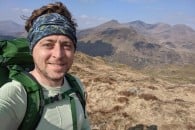







































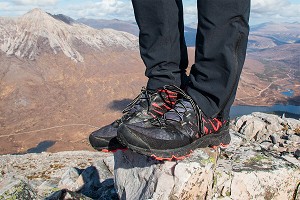
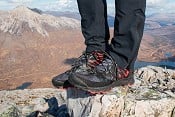
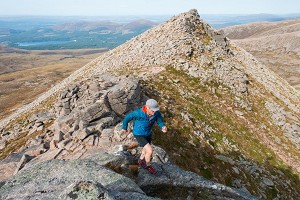
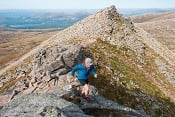
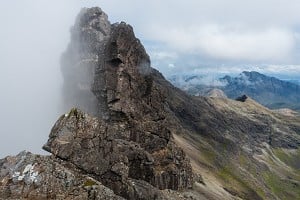
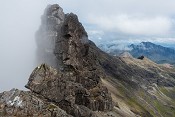
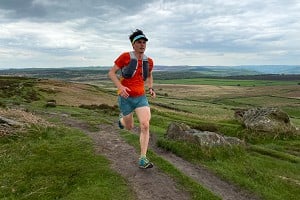
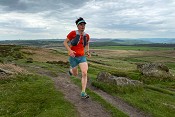
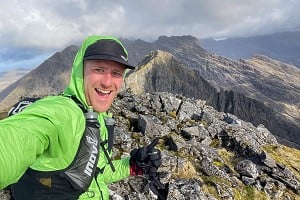
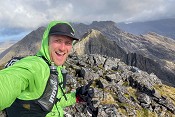
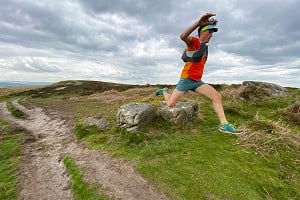
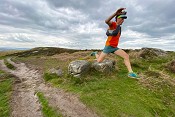
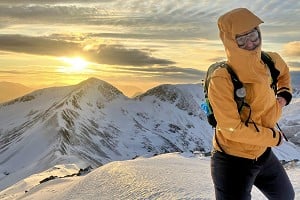
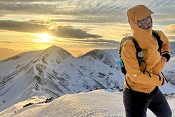








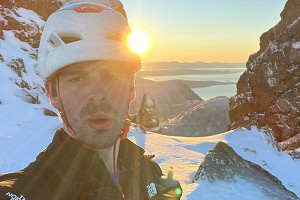
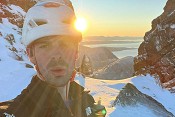

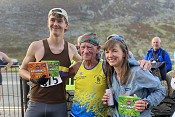

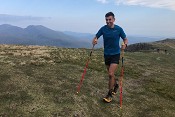
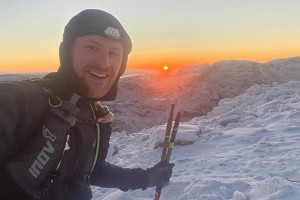
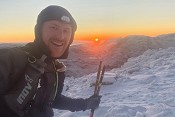
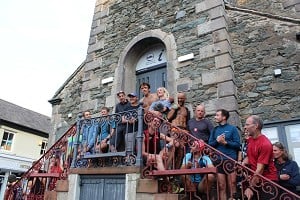
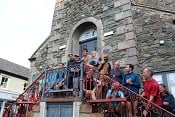
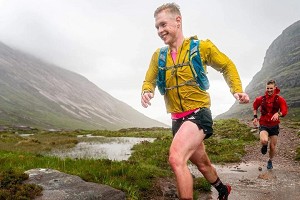
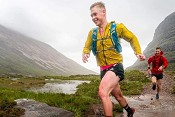
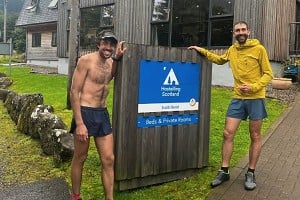
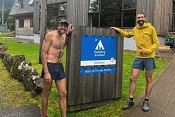
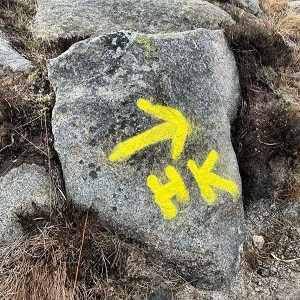
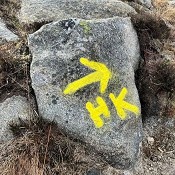

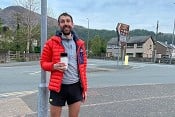
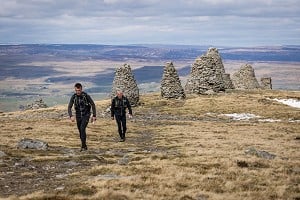
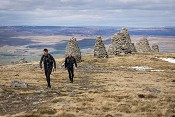
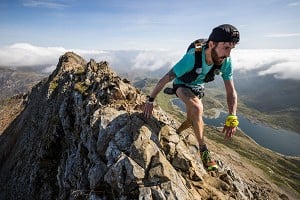
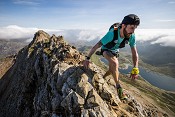
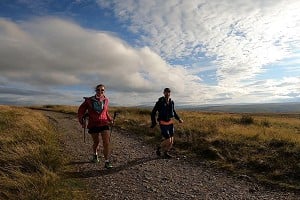
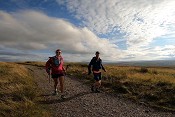
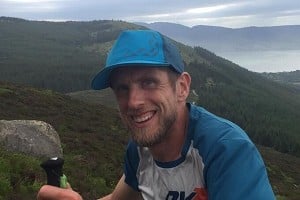
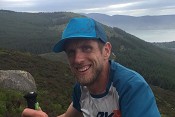
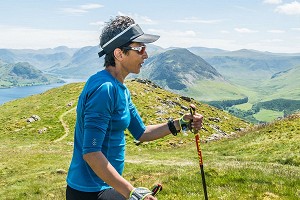
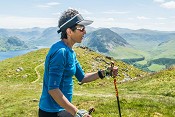
Comments